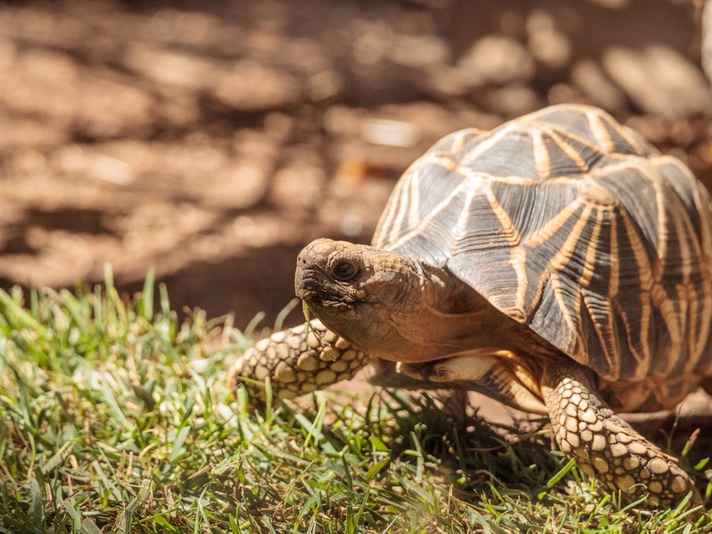The Burmese star tortoise is a critically endangered tortoise that saw its numbers dwindle to just a few hundred individuals in the 1990s.
An aggressive captive-breeding effort for the Burmese star tortoise (Geochelone platynota) is paying off as the population of the critically endangered reptile has grown to more than 14,000 tortoises, from just a few hundred individuals in the early 2000s.
The tortoise was nearly wiped out in the mid 1990s due to massive demand in southern China, so much so that it was declared ecologically extinct.
"This is the modern day equivalent of saving the bison from extinction,” said Steven Platt, a herpetologist with the Wildlife Conservation Society's Myanmar Program. “A team of conservationists spearheaded an aggressive captive breeding effort, and have brought an animal back from the brink to where it now has the potential to be reintroduced into the wild in large numbers."
Want To Learn More?
A Peek Inside The Turtle Conservancy
Conservation efforts were set in motion in 2004, with the Nature and Wildlife Conservation Division of the Myanmar Ministry of Natural Resources and Environmental Conservation and the Wildlife Conservation Society (WCS)/Turtle Survival Alliance (TSA) Myanmar Program establishing three “assurance colonies” comprised of 175 tortoises, most of which were confiscated from illegal wildlife traffickers. Approximately 750 captive-bred tortoises have been released into sanctuaries in Myanmar.
The colonies were created within existing wildlife sanctuaries to bolster the conservation efforts, which involved determining the best way to keep and breed the species—from diet and feeding to the care for the hatchlings. The breeding facilities were designed by herpetologists from the WCS's Bronx Zoo, who also provided husbandry techniques that were essential to the success of the program.


